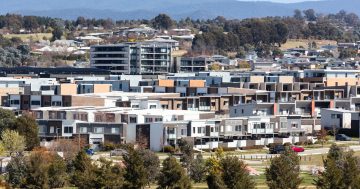
Are you paying too much for your energy bills?
Owners of large commercial buildings and shopping centres have been doing it for years and reaping the benefits of cheaper utilities such as gas and electricity. Isn’t it time owner’s corporations in Canberra got in on the ACT?
What we are talking about is ‘embedded networks’.
So, what is an ‘embedded network’? According to the Australian Energy Regulator:
In some sites (typically apartment blocks, retirement villages, caravan parks and shopping centres), the electrical wiring is configured in such a way as to enable the owner of the site to sell energy to all the tenants or residents based there. This is known as an embedded network.
The owner of a site with an embedded network usually buys energy from an energy retailer and then ‘onsells’ the energy to the different customers at the site. In some situations, the energy sold by the owner may be generated on site.
Chris Miller, Managing Director Vantage Strata, said, “This is of interest to owners of buildings that have multiple users within them that have meters for things such as electricity, gas, and water for each tenant.”
Chris says that this provides the building owner another source or revenue and/or delivers a better outcome for their tenants.
“In recent years apartment buildings in markets outside of Canberra have taken a similar approach buying energy at a wholesale rate and then selling it back to residents,” Chris explained.
According to Chris, the recent deregulation in the energy market in the ACT has potentially made it easier for the owners of commercial buildings and shopping centres, and owners corporations or developers, to participate in the energy market locally.
“Conceptually, what this means is that owners corporations or developers may soon be able to participate in purchasing energy in the wholesale energy market and selling it back to residents,” Chris explained.
“The benefit to the people receiving these utilities is, rather than having an individual ACTEW meter and monthly service cost, each apartment is fitted with a smart meter and building management system, that can measure use of power in real time – there is real potential for energy costs to be lowered for the owners.”
Chris says that you will start to see this becoming a feature of the local market over the next few years of the development cycle.
“The reason it isn’t a feature of the market today is that ACTEW had a virtual monopoly over the energy market,” Chris stated.
“It is new territory for us in the ACT and we are still a bit in the dark about how this will work. But, ‘Embedded networks’ are coming and we need to start thinking about it.”
The potential pitfall of ‘embedded networks’ may include residents feeling that flexibility of choice may decrease. But Chris says that residents and apartment owners have overarching rights to opt out and also have the flexibility to have the energy provider of their choosing.
“I would like to see ‘embedded networks’ lead to better outcomes for apartment owners in Canberra that have suffered from ongoing increases in government taxes and the cost of power,” Chris concluded.
This is a sponsored article, though all opinions are the author’s own. For more information on paid content, see our sponsored content policy.




















